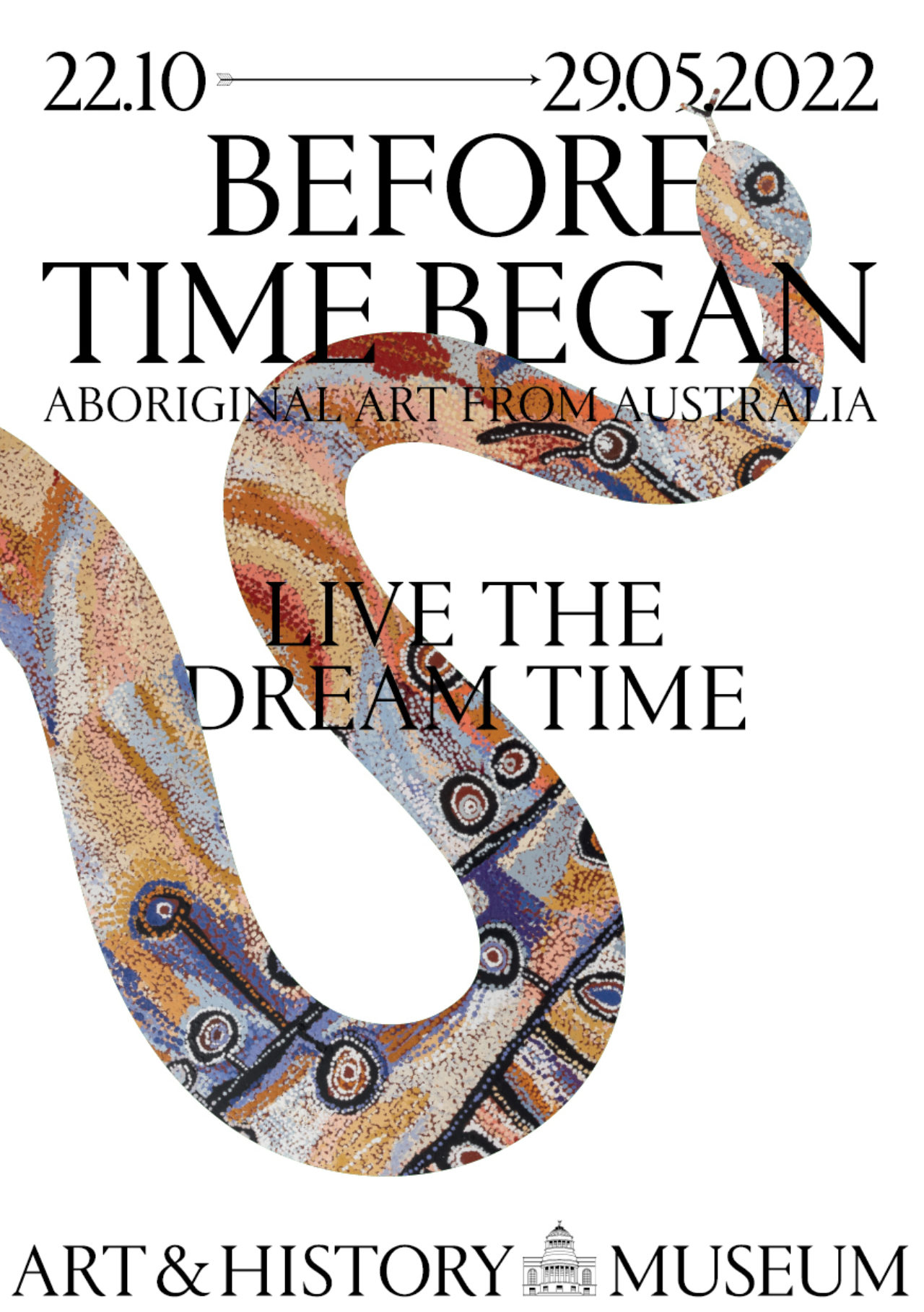From 22 October 2021 to 29 May 2022, the Art & History Museum will be exhibiting Australian Aboriginal art for the first time. The world of Aboriginal people is a wonderful and fascinating universe, filled with secrets for the non-initiated. The First Peoples of Australia are the heirs to the oldest continuous culture in the world, which dates back 65.000 years. However rich, this culture is not expressed in architecture, written texts or artefacts. Today, as in the past, ancestral knowledge is exclusively passed on from one generation to the next by means of an oral tradition centred around rituals and ceremonies, in which the concept of ‘Dreamings’ or ‘Dreamtime’ plays a vital role.
‘Dreamtime’ is a mythical time in which ancestral spirits such as the Tingari, the Seven Sisters, and the Rainbow Serpent created the earth, the plants, the animals, the people, the water and the stars. ‘Dreamings’ refer to these spirits, as well as their travels throughout the land and their acts of creation. However, Aborignal ‘Dreamtime’ has nothing to do with the Western concept of time. It is a time outside time, an everywhen, in which creation is at once past, present and future.
BEFORE TIME BEGAN explores the Dreamings and the creation of the earth but also focuses on the birth of contemporary art. The main part of the exhibition presents traditional bark paintings starting from the 1950s, made with natural pigments and originating in Arnhem Land; paintings and sculptures from the 1970s which emerged from the desert regions with the Western Desert art movement, in which artists experimented with bright industrial paint on canvas and wood panels; as well as more recent, at times monumental, creations by various contemporary artists or art collectives. Two short films feature a group of male artists and a group of female artists collaborating. While they’re painting, they tell each other stories, sing, laugh and dance together. Even though certain aspects remain hidden for the non-initiated, the paintings reveal ancient mythical stories and display a strong connection with their natural surroundings.
SOURCE: Art & History Museum.
